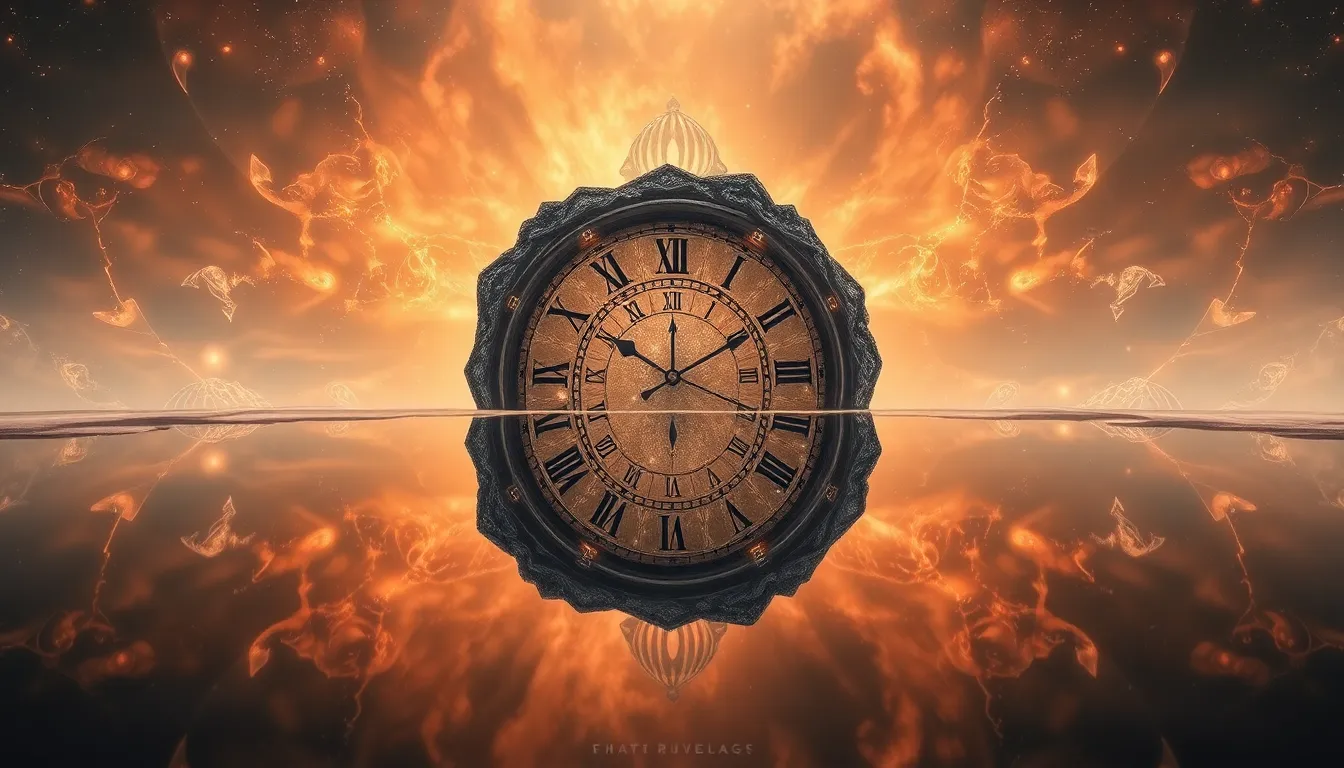The Crystal Mirror: Reflecting the Mysteries of Time
Introduction to the Crystal Mirror
The crystal mirror, an alluring object that captivates both the eye and the mind, has held significant cultural and historical importance throughout the ages. Defined as a reflective surface often made from polished crystal, these mirrors have been utilized for both practical and symbolic purposes. From ancient civilizations to modern spiritual practices, crystal mirrors serve as a bridge between the tangible and the ethereal, reflecting not just images but also deeper meanings.
Metaphorically, crystal mirrors represent introspection, clarity, and the passage of time. They invite individuals to reflect on their inner selves while simultaneously being a window into different cultural and spiritual realms.
The Origins of Crystal Mirrors
The journey of mirrors, including crystal mirrors, dates back thousands of years. The earliest mirrors were made from polished stone, such as obsidian, and later transitioned into metals like bronze and silver. The invention of glass mirrors in the 13th century revolutionized the reflective surfaces, paving the way for the modern mirrors we know today.
Crystals have held a significant role in various cultures, often seen as vessels of spiritual energy. For example:
- Ancient Egypt: Crystals were used in burial rituals and were believed to provide protection in the afterlife.
- Chinese Culture: Crystals symbolized harmony and were often incorporated into feng shui practices.
- Native American Traditions: Crystals were regarded as sacred objects, believed to possess healing properties.
Crystals and Their Properties
Various types of crystals are used in the creation of mirrors, each possessing unique properties that enhance their beauty and significance. Some of the most common crystals used include:
- Quartz: Known for its clarity and energy amplification.
- Amethyst: Valued for its calming energy and spiritual insights.
- Rose Quartz: Associated with love and compassion, often used in emotional healing.
Beyond their physical attributes, crystals are imbued with metaphysical properties. For example, many believe that:
- Clear quartz can enhance concentration and clarity of thought.
- Amethyst can foster intuition and peace.
- Rose quartz encourages emotional healing and self-love.
The Science Behind Reflection
At a fundamental level, mirrors work by reflecting light. When light hits a reflective surface, it bounces back, creating an image. This is primarily due to the smoothness of the surface and its ability to reflect light rays uniformly.
In the case of crystal mirrors, the unique structure of crystals influences how light interacts with them. The arrangement of atoms within a crystal affects its optical properties, leading to stunning visual effects such as:
- Refraction, where light bends as it passes through the crystal.
- Dispersion, which can create a spectrum of colors.
- Reflection, enhanced by the crystalline structure, often resulting in a more vivid image.
Cultural Significance of Mirrors Throughout History
Mirrors have played a vital role in mythology and folklore across various cultures. For instance:
- In Greek mythology, Narcissus fell in love with his reflection, symbolizing vanity and self-obsession.
- In many cultures, mirrors are believed to hold the ability to capture and reflect the soul.
The use of mirrors in art and literature also reflects societal values and human experiences. Artists have often explored themes of identity, perception, and reality through the lens of mirrors, creating thought-provoking works that challenge viewers to consider their own reflection.
The Concept of Time in Relation to Mirrors
Philosophically, mirrors can serve as metaphors for time and reflection. They allow individuals to contemplate their past, present, and future, serving as a reminder of the transient nature of life. The act of looking into a mirror can evoke memories, prompting introspection about one’s journey through time.
In this sense, mirrors can symbolize:
- The permanence of memories.
- The fluidity of identity.
- The inevitability of change and growth.
The Crystal Mirror in Spiritual Practices
Crystal mirrors have found their place in various spiritual practices, particularly in meditation and healing. They are often used to:
- Enhance meditation by providing a focal point for contemplation.
- Facilitate healing by channeling energy through the crystal.
Additionally, mirrors are utilized in divination practices such as scrying, where individuals gaze into a reflective surface to receive insights or messages from the subconscious or spiritual realms.
Modern Interpretations of the Crystal Mirror
In contemporary society, crystal mirrors have seen a resurgence in popularity, particularly in art and wellness culture. Artists are exploring the aesthetic and symbolic potential of crystal mirrors in their works, often incorporating them into installations that invite viewer interaction.
Moreover, the wellness industry has embraced crystals as tools for healing and self-care, leading to a renewed interest in their uses and significance. Crystal mirrors are now often featured in:
- Home decor, promoting a sense of tranquility and beauty.
- Spiritual practices, aiding in personal growth and self-awareness.
The Crystal Mirror as a Tool for Self-Reflection
Psychologically, the act of self-examination through a crystal mirror can facilitate introspection and personal growth. By engaging with one’s reflection, individuals can:
- Gain clarity about their emotions and thoughts.
- Identify patterns and behaviors that may need addressing.
- Foster a deeper understanding of themselves.
The process of using a crystal mirror can be a powerful tool for self-discovery, encouraging individuals to embrace their authentic selves and navigate their personal journeys with greater awareness.
Conclusion: The Enduring Mystique of the Crystal Mirror
In conclusion, crystal mirrors possess a multifaceted significance that spans history, culture, and spirituality. They serve not only as objects of beauty but also as symbols of reflection, time, and personal growth. As we continue to explore the mysteries of the crystal mirror, we uncover layers of meaning that inspire curiosity about our own identities and the passage of time.
The enduring mystique of crystal mirrors invites us to engage in self-reflection, fostering a deeper connection with ourselves and the world around us. As we gaze into their depths, we may find not just our physical reflection, but glimpses of our past, present, and future self.



